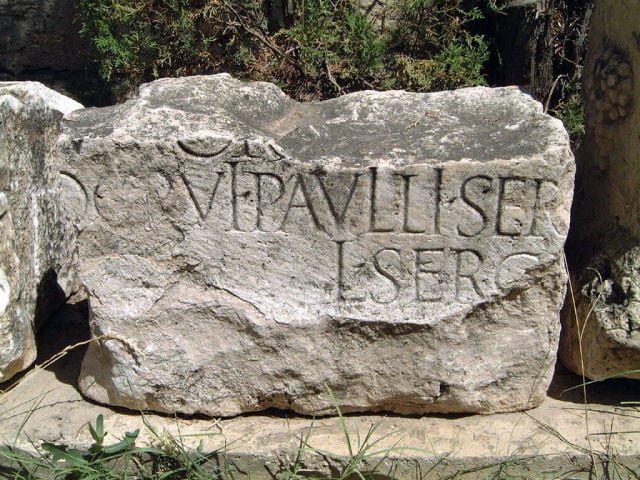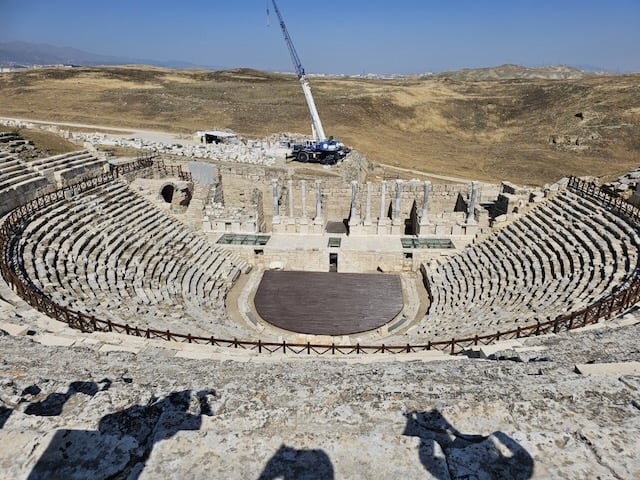As Israel invaded Canaan and conquered the land, the Israelite tribe of Judah was allotted a very large portion of land. Their territory was the southernmost allotment of all the tribes, stretching from Jerusalem in the north to Kadesh-barnea in the south. In reality, though, their primary area of occupation was limited to the region shown on this map, due to the Philistines’ occupation of the western coast and the extremely arid conditions of the land in the far south. Also, the Bible notes that the allotment of the tribe of Simeon “formed part of the territory of Judah; because the portion of the tribe of Judah was too large for them, the tribe of Simeon obtained an inheritance within their inheritance” (Joshua 19:9), and this is confirmed by the explicit mention of over twenty towns being allotted to both tribes (see Joshua 15:20-63; 19:1-9). The Kenites, who were not ethnic Israelites (they were descendants of Moses’ father-in-law; see Judges 1:16) but lived in peaceful coexistence with them, also occupied the arid land to the southwest of the Dead Sea.
Scripture further details many of the clans and sub-clans of Judah (1 Chronicles 2:1-55; 4:1-23). Most (or perhaps all) of these clan names corresponded with names of various towns in Judah, since towns in ancient Israel were often named after the ancestor of the clan that founded or predominantly occupied the town. Because of this, the boundaries of occupation for the clans of Hur, Shelah, and Hezron can be determined with some certainty and are displayed on this map. Likewise, the clan of Carmi, though lacking any clear references to known towns, may have settled in the general area of the valley of Achor, since the family of their ancestor Achor was famously put to death there (Joshua 7; see “Israel Enters the Promised Land” map). It is also interesting to note that an Israelite judge named Jair was descended from Judah by his father’s lineage, but his father’s mother was from the tribe of Manasseh, and when Jair conquered many towns in Manasseh’s territory of Gilead and Bashan (Numbers 32:40-42; Deuteronomy 3:14; Joshua 13:30; Judges 10:3-5; 1 Kings 4:13; 1 Chronicles 2:22-23; see “Bashan” map), those towns continued to be regarded as belonging to Manasseh. Perhaps this was in keeping with the tribe of Manasseh’s openness to inheritance by female descendants in certain cases, such as with Zelophahad’s daughters (Numbers 27; Joshua 17:1-6; see “Poster Map of the Tribe of Manasseh (West) and Its Surroundings, circa 1200 B.C.”).
Two centuries later the tribe of Judah gave rise to the enduring dynasty of King David, who initially ruled over only the tribe of Judah but eventually over all the Israelite tribes (2 Samuel 2-4; see “David and Ishbosheth” map). After the death of David’s son Solomon, however, the northern tribes revolted, leaving only Judah and Benjamin under the Davidic dynasty’s reign (1 Kings 12; 2 Chronicles 10; see “The Kingdoms of Israel and Judah” map). For several decades after the northern kingdom was exiled by the Assyrians (2 Kings 15:29; 1 Chronicles 5:26; see “Israelites Are Exiled to Assyria” map) the kingdom of Judah suffered a similar fate at the hands of the Babylonians (Daniel 1; 2 Kings 24-25; 2 Chronicles 36; Jeremiah 39; 52; see “Judah Is Exiled to Babylon” map). Unlike the northern kingdom, however, Judah was typically allowed to maintain their common identity and religious distinctives during their time in exile (see The Land of Exile map), thus fostering their sense of continuity with the past tribe and kingdom of Judah.












 English (US) ·
English (US) ·